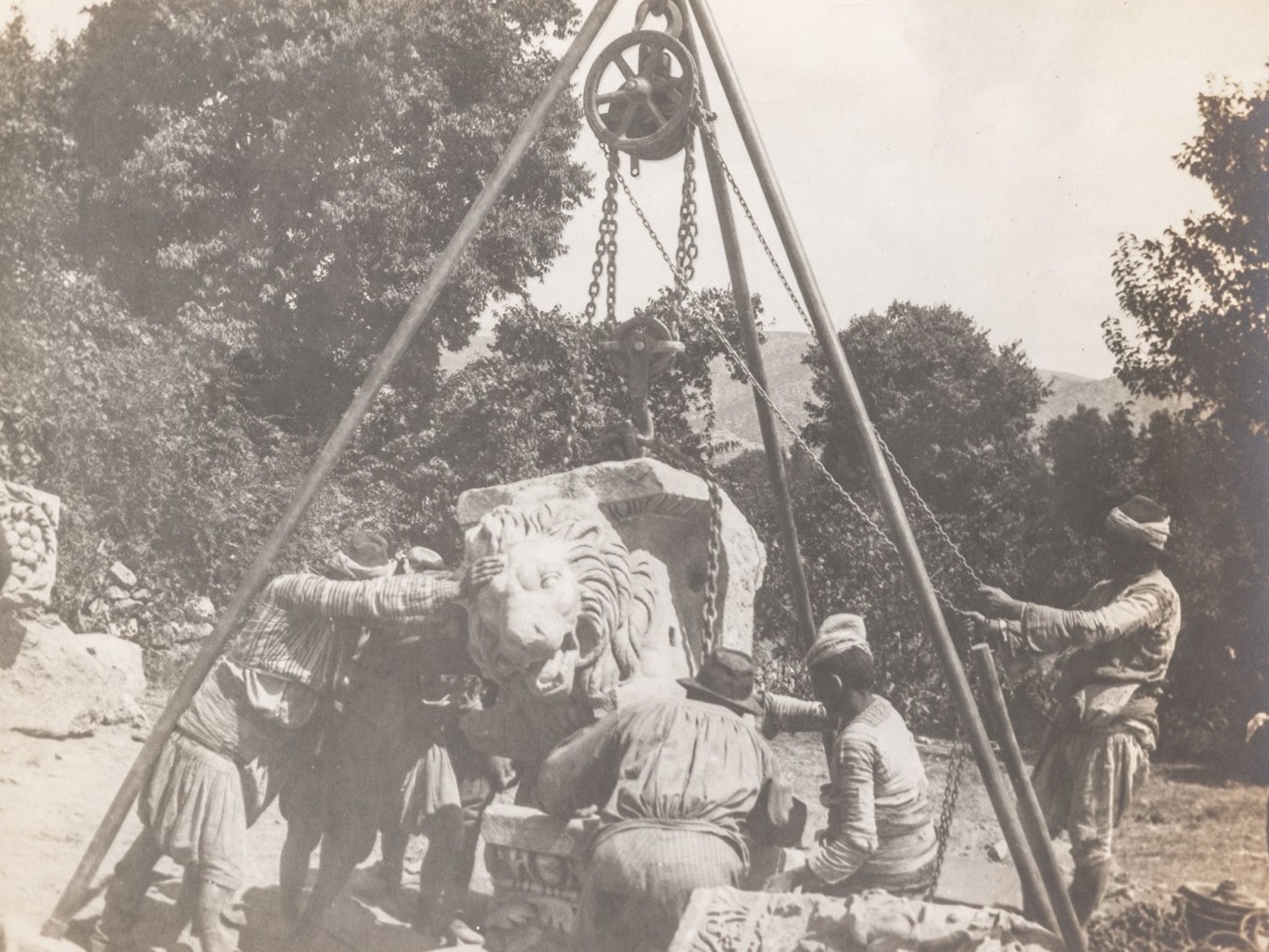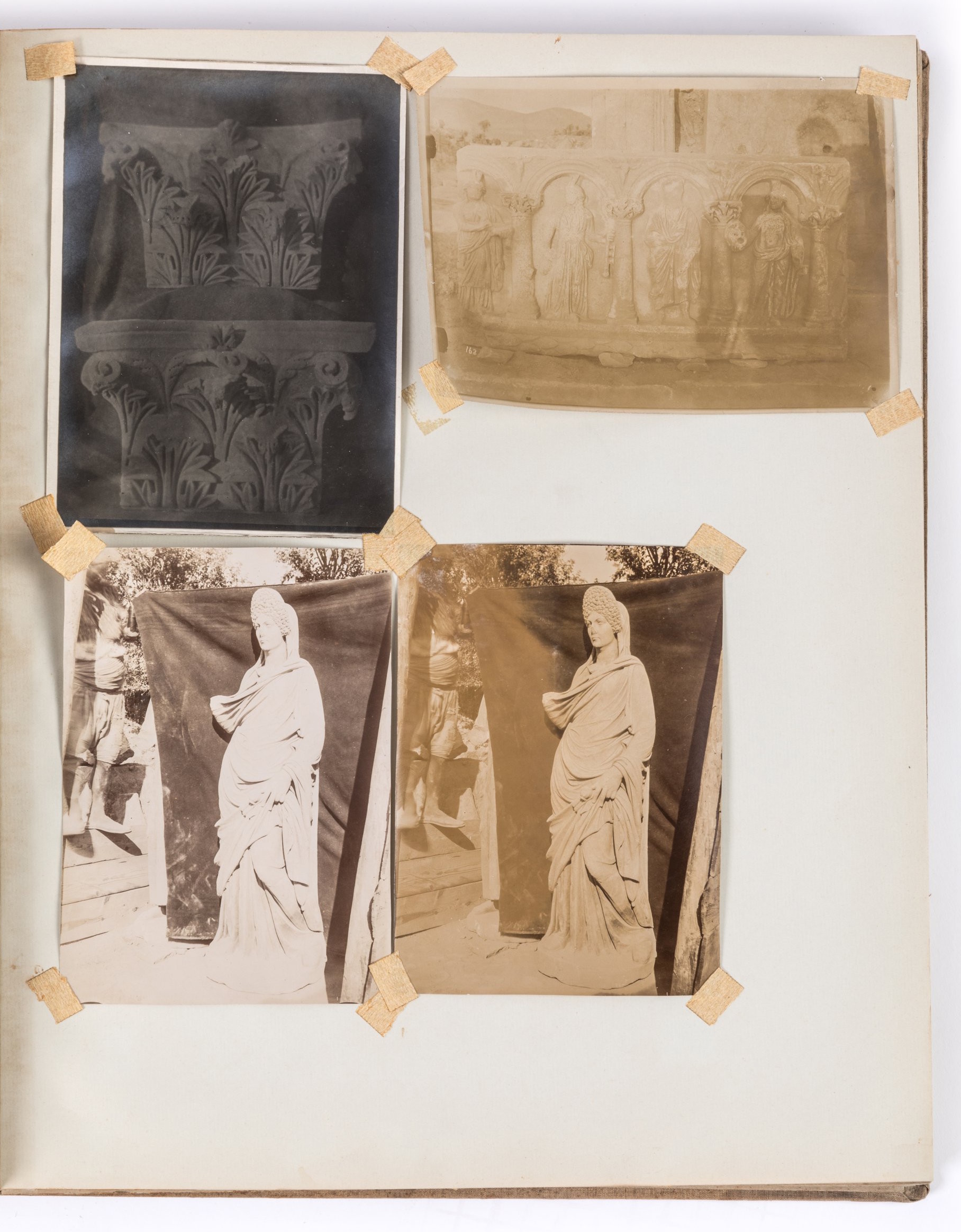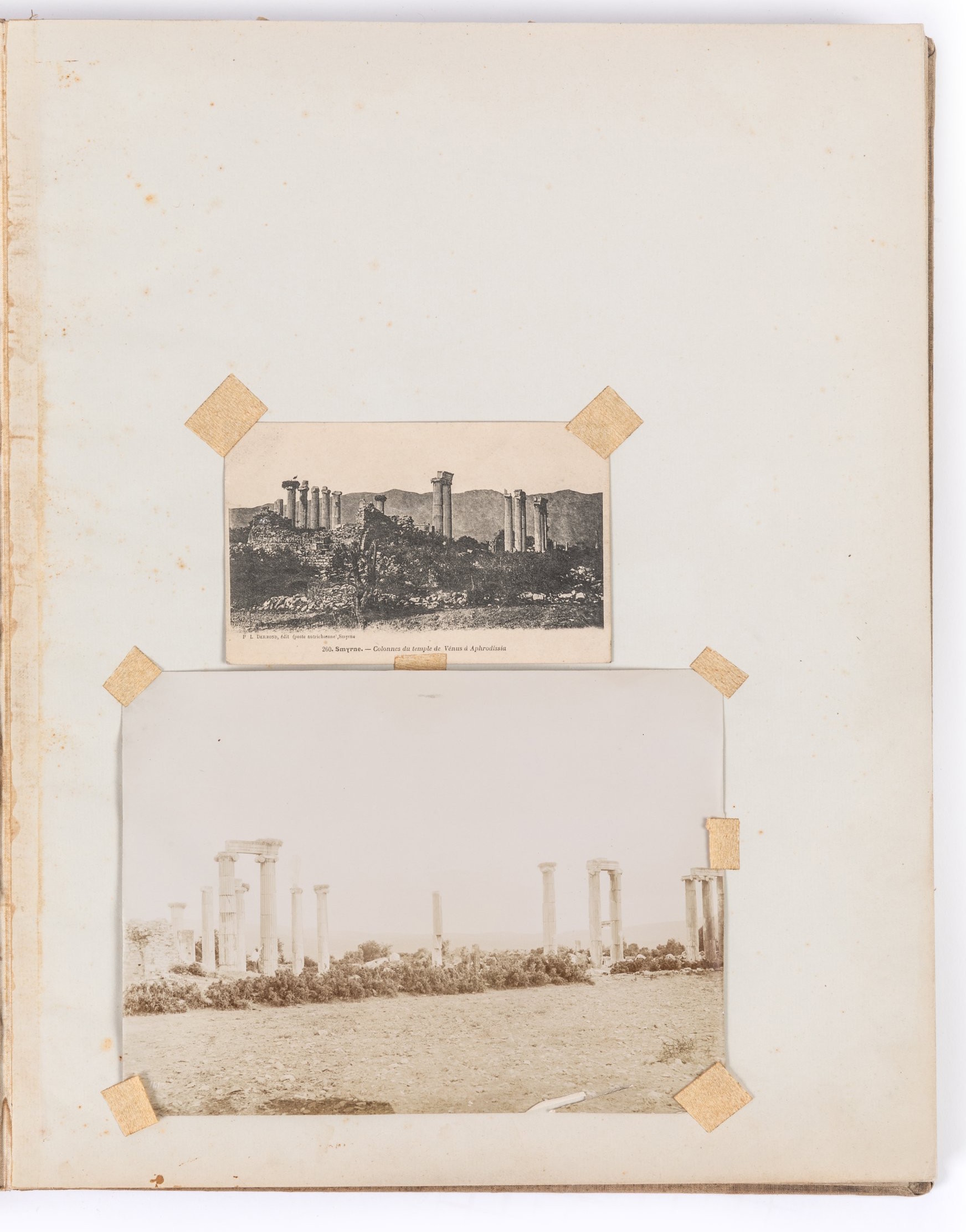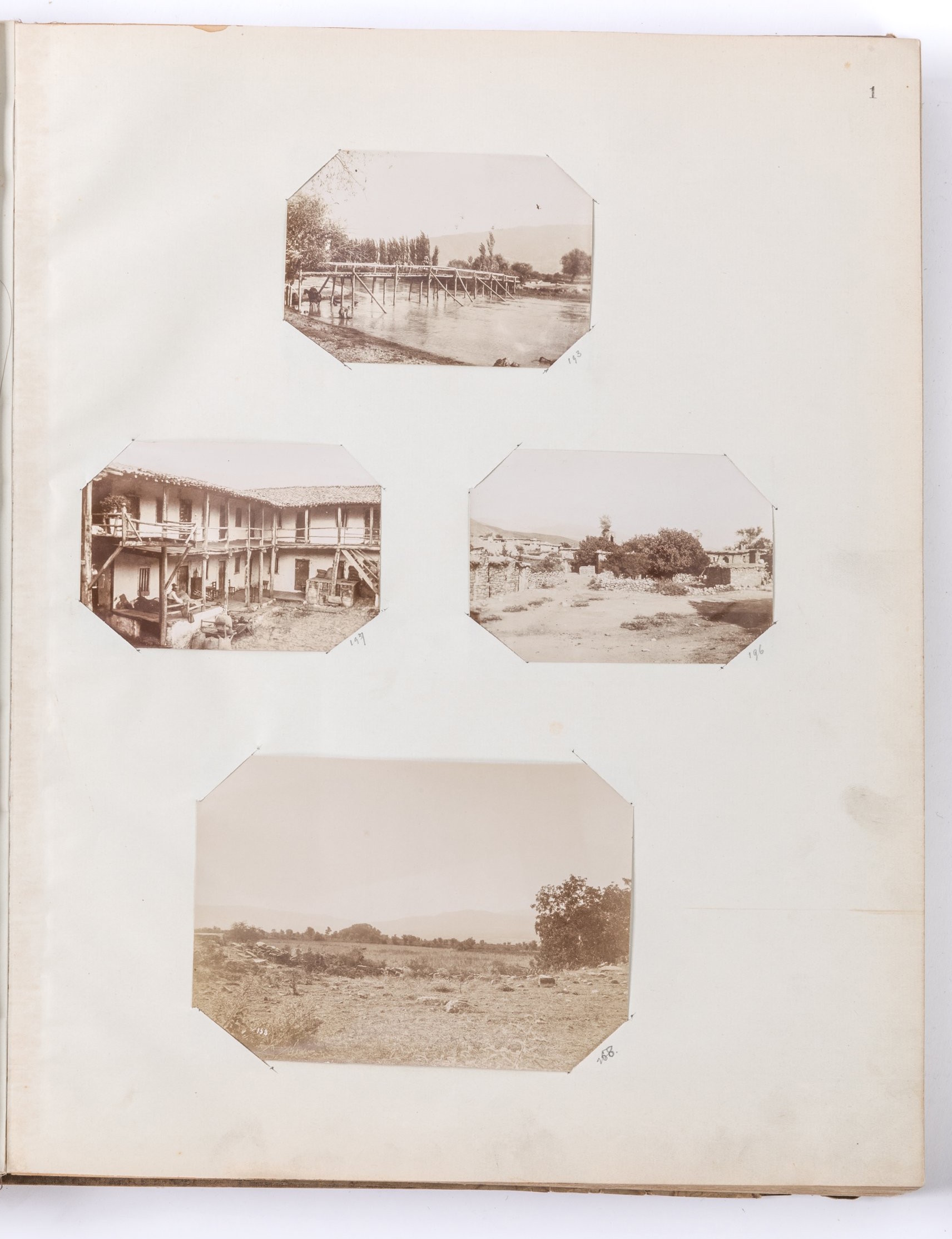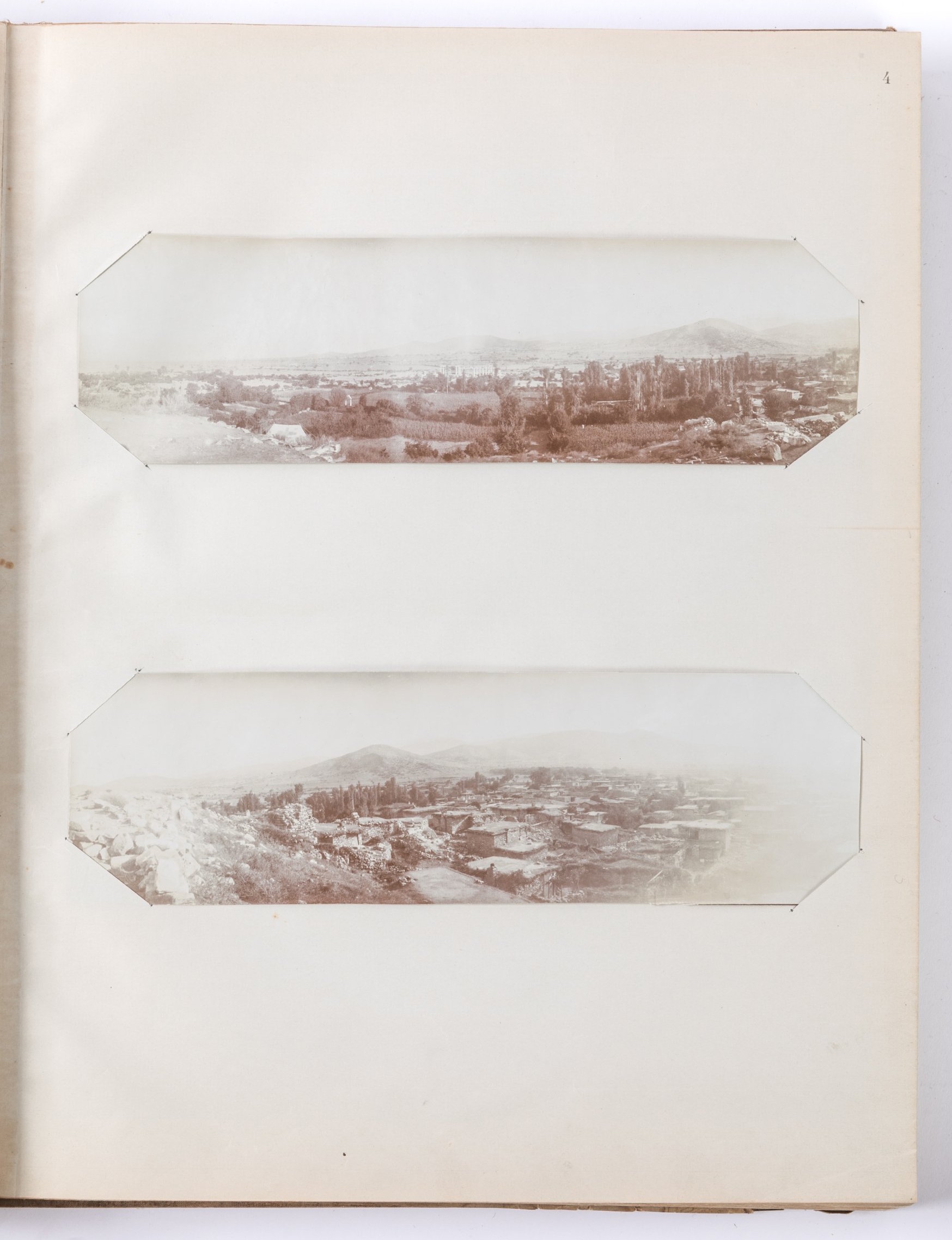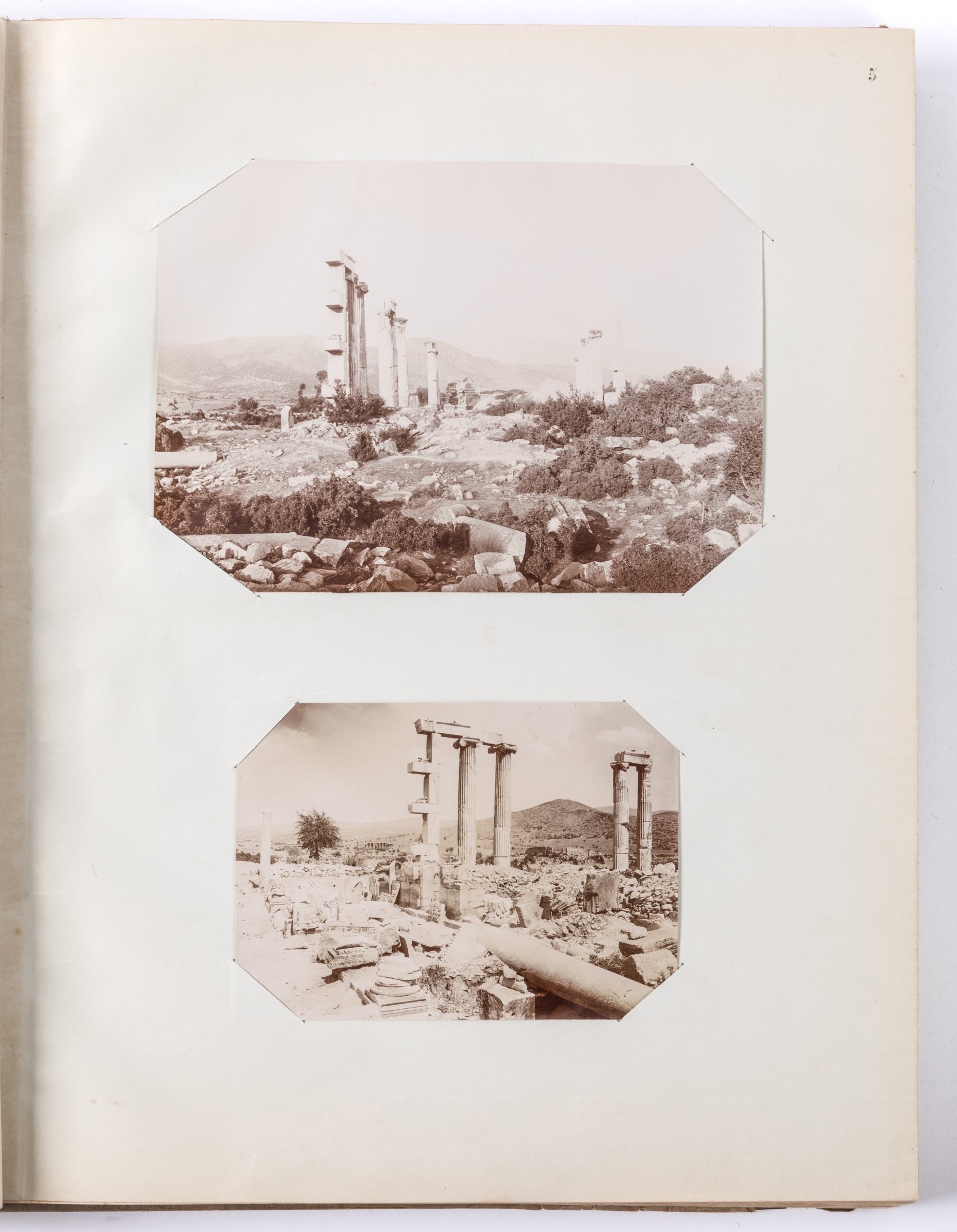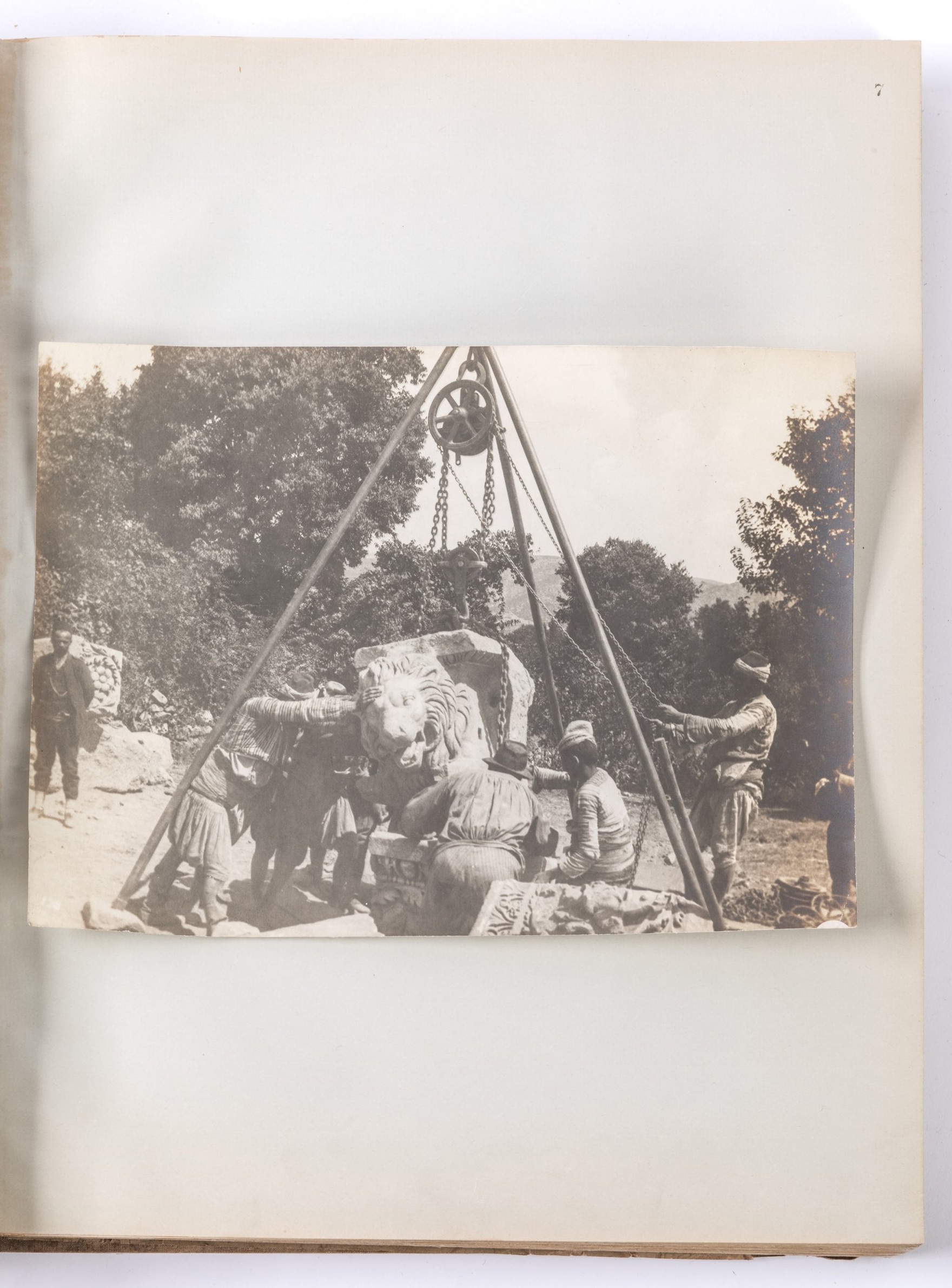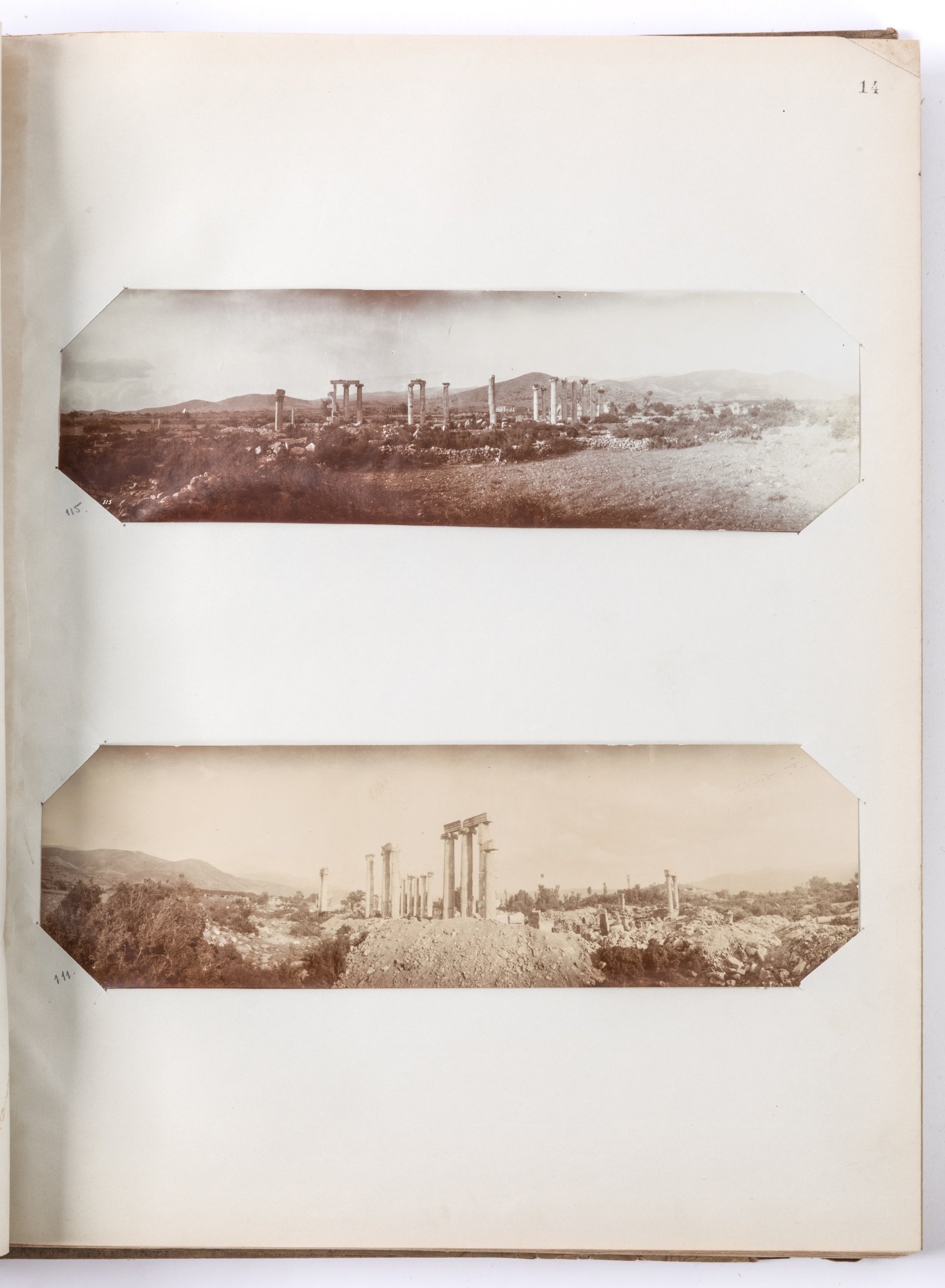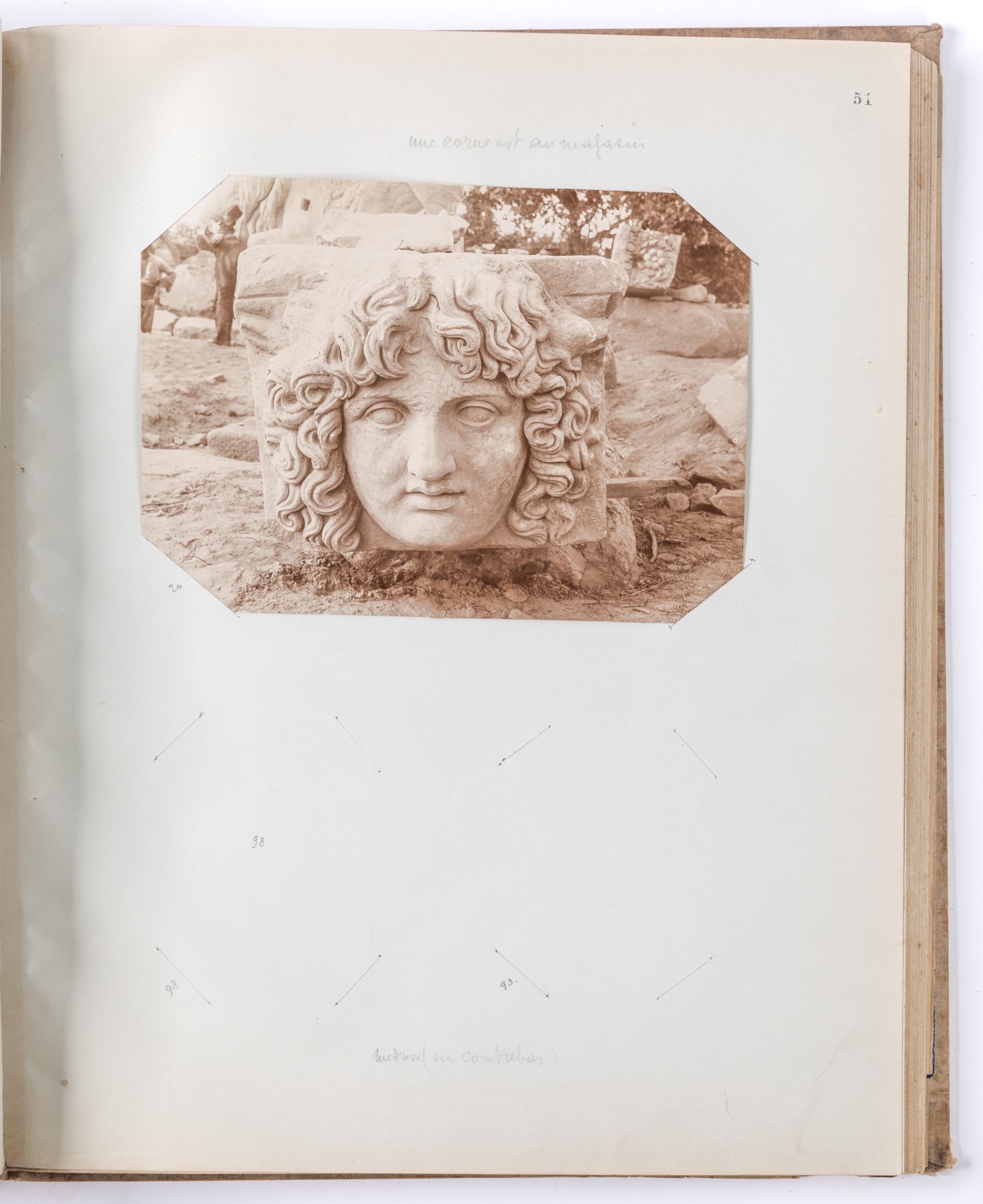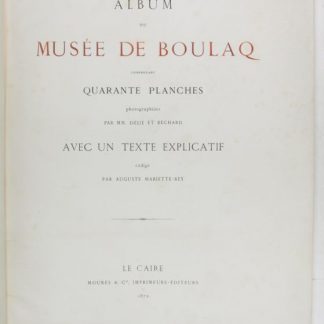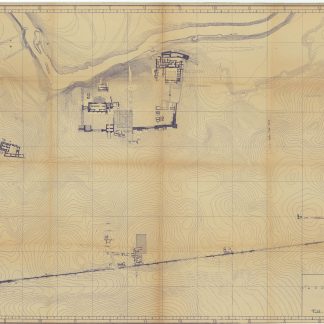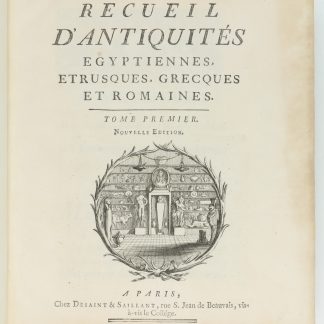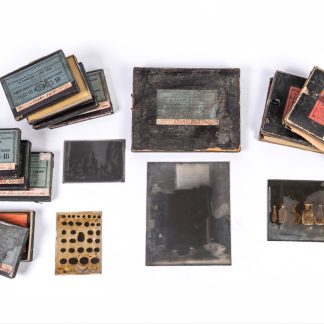Excavating Aphrodisias: two historically significant albums from the first archaeological campaigns
Two albums with 247 photographs, 1 postcard, and 4 building plans from the archaeological site of Aphrodisias.
45,5 x 36 cm (albums) and various formats (photographs and plans).
€ 125,000.00
Extensive documentation of the first official archaeological excavation of Aphrodisias in the historic Caria region, now part of Anatolia, Turkey. The first album contains 199 photographs and the valuable plans, captioned "theatre", "quarries" (with parts of the city), "thermae", and "temple of Aphrodite converted to a Byzantine church; state of the ruins in 1904, indication of the digs". The dating of the album to the first campaign of 1904 suggests that the second album (48 photographs and the postcard) shows the excavations of 1905. The smaller extent of this album agrees well with the fact that Gaudin left Aphrodisias soon after the beginning of the campaign.
Named Aphrodisias in the Hellenistic period, the city gained importance since the 1st century AD as an early and reliable ally of the Roman Empire in the region. During the Roman period, Aphrodisias enjoyed extensive privileges and rose to become a provincial capital. The well-preserved ruins of public and private buildings excavated since 1904 bear witness to the wealth and importance of Aphrodisias during Imperial times. The city was also a centre of marble production and sculpture, adding greatly to its archaeological significance as documented in the albums. In the early 7th century, an earthquake largely destroyed the now Byzantine city that had been renamed Stauropolis around the same time, in an effort to remove pagan connotations. Little remained of Aphrodisias's former importance and splendour thereafter.
Osman Hamdi Bey, the father of Turkish archaeology, had first visited the site of Aphrodisias in 1892 and obtained permission for excavations in 1898. Lacking the necessary funds for a large archaeological campaign, the Francophile Hamdi Bey proposed to Paul Gaudin, then director of the Smyrna-Cassaba railway, to organize excavations in Aphrodisias under his license. A passionate amateur archaeologist who had already led excavations in the bronze-age necropolis of Yortan, Gaudin financed the initial campaign in August 1904. The summer of 1905 saw a more professional campaign under the scientific direction of the French archaeologist Gustave Mendel (1873-1938), with moderate financial support from the French state and private institutions. In August 1905, Paul Gaudin was called to Damascus to serve as director of the Hejaz railway project and therefore was absent for most of the 1905 campaign. Due to a conflict between Gaudin and Mendel the excavations did not continue after 1905, and it was only in 1962 that Kenan Erim began a new campaign under the aegis of New York University that is currently led by Professor R. R. R. Smith (Oxford).
In view of the long interruption of work, Gaudin's photographic documentation is particularly valuable, as many of the archaeological findings have been dispersed among museums in Turkey and Western Europe or even lost over time. As Gaudin's 1904 campaign was not conducted systematically, the earlier photographs provide particularly valuable information concerning the progress of the excavations.
Paul Gaudin was born in Paris, the son of the chemist Marc-Antoine Gaudin (1804-80). His passion for photography was certainly inherited from his pioneering father who in 1841 introduced the usage of bromine fumes to improve the sensitivity of the plates, which allowed for a great reduction of the necessary exposure time and published the first French journal devoted to photographic research, "La Lumière". In 1880, Paul Gaudin completed his engineering training, obtained a position as deputy stationmaster in Paris, and was subsequently employed as an inspector by the Chemins de fer de l'Ouest. His career took an unexpected turn when he was sent to Turkey in 1892 to direct the Moudania-Brousse railroad line operated by the important Belgian investor and engineer Georges Nagelmackers. As early as 1894, after Nagelmackers had obtained the concession for the Smyrna-Cassaba railway, Gaudin was promoted to director of this important line and led its expansions. Paul Gaudin's lasting contributions to archaeology with his excavations in the Yortan necropolis (1898 and 1901) and in Aphrosidias, as well as his important collection of Smyrnian figurines and other objects, date to his time in Smyrna (Izmir). Gaudin's most prestigious and challenging position as a railroad engineer, however, was his charge by Sultan Abdul Hamid II to complete the famous Hejaz railway. Despite financial problems, difficult geographical and climatic conditions, and the often hostile (sometimes even violent) reaction of the local population, Gaudin led the rapid expansion of the line from Ma'an to Medina, where the construction came to a definite halt in 1908. During this project, Gaudin was the first to photographically document the Arabic old town of Al-'Ula in 1907.
Little is known of Paul Gaudin's employments after his contract with the Hejaz railway expired in 1909. He briefly collaborated on the disastrous Ottoman project for the construction of a railway line from Hodeidah to Sana'a in 1911 and seems later to have permanently returned to France, where he died in Versailles in 1921. Today, Paul Gaudin is best remembered as a major patron of the Louvre, to which he donated more than 2,000 artifacts from his collection. The Istanbul Museum, the British Museum, and other institutions also owe him important contributions to their Asia Minor, especially Smyrna, antique collections.
Collection of Paul Gaudin, family inheritance.
G. Charloux, Paul Gaudin et les premières campagnes de fouilles à Yortan et à Aphrodisias, in: Orient-Express, no. 1, 2001, pp. 24-26; M. Collignon, Note sur les fouilles exécutées à Aphrodisias par M. Paul Gaudin, in: CRAI, 48/6, 1904, pp. 703-711; A. Le Goff/N. Coutsinax, Les dossiers individuels de mission conservés aux Archives nationales et leur apport à l’histoire de l’archéologie: l’exemple de la fouille d’Aphrodisias en 1905, in: Les Nouvelles de l’archéologie, no. 110, 2007, pp. 40-47.

